-
Car Reviews
- All reviews
- Midsize SUVs
- Small cars
- Utes
- Small SUVs
- Large SUVs
- Large cars
- Sports SUVs
- Sports cars
- Vans
Latest reviews
- Car News
-
Car Comparisons
Latest comparisons
- Chasing Deals
The petrol-V8-powered Y62 cops a thoughtful, Aussie-developed off-road makeover. But is it truly capable and is this aging, six-figure 4WD worth the coin?
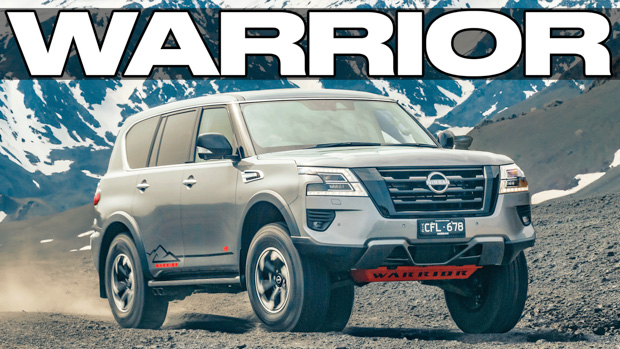
Fun facts: in August this year, Nissan sold more Y62 Patrols than any other time in the 4×4 wagon’s decade-long stint on sale in Oz. And it’s the nameplate’s strongest monthly sales result since June 2005.
According to Nissan Australia, this is down to good old supply and demand, namely lots of both. Delivery on new factory orders for regular Ti and Ti-L versions is three to six months.
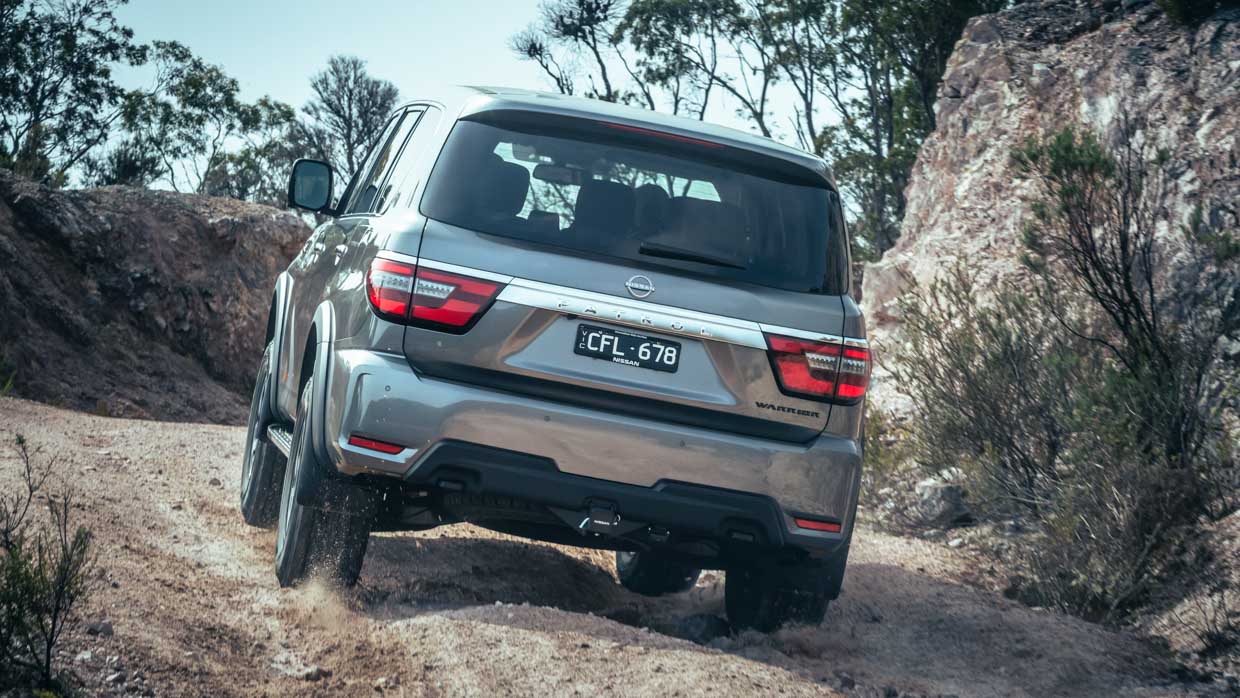
Then there’s a brand-spanking Nissan-Premcar co-op and subject of this review, the just-launched off-road-enhanced Warrior, that the importer says can be landed in owner driveways by Christmas.
Well, at least that’s the current snapshot of projected demand at the time of writing this review, one that could change very rapidly…
Of course, the skyrocketing popularity of a ten-year-old model aligns with the reality that the Y62 is well into the shadow of its twilight and, as we’ve recently reported, the rumoured twin-turbo-six-powered replacement on the near horizon will send the current, thumping petrol V8 into permanent retirement.
If you like the old stuff, and clearly a good many Aussies do, it’s a case of now or never.
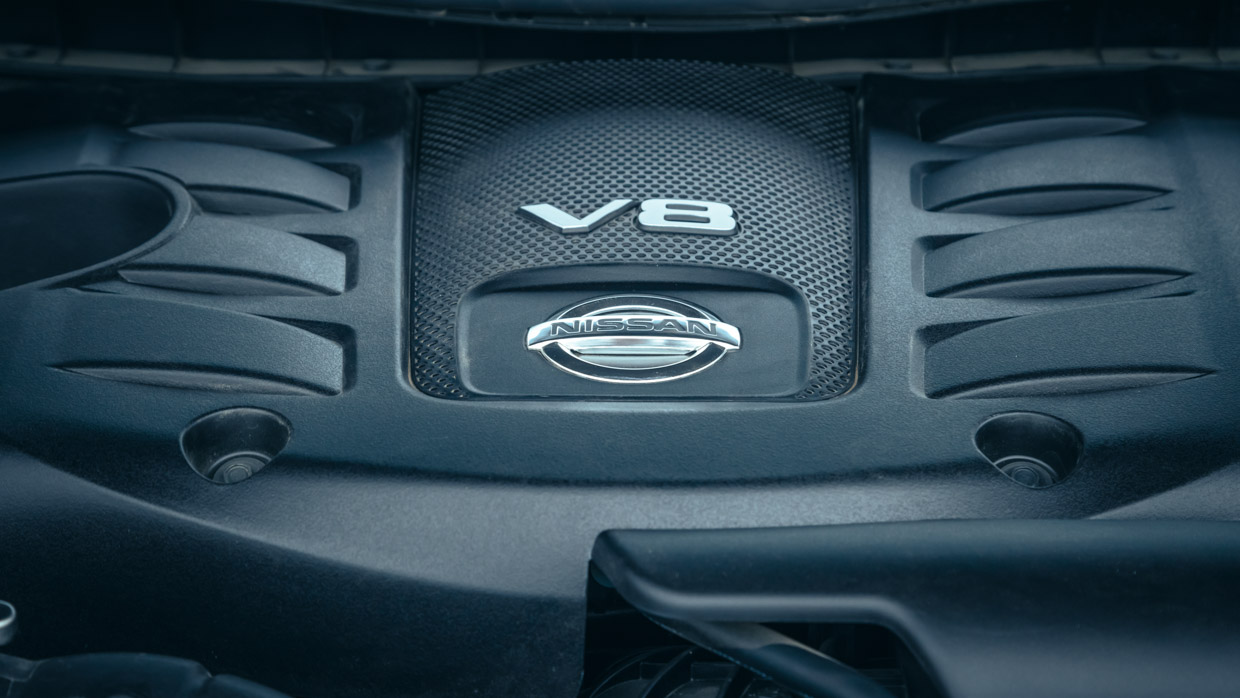
Of course, in approaching the assessment of the production version of new Warrior-fied Patrol – we reviewed the prototype a few months back – it’s easy to take the well-trodden path of focusing largely so much low hanging fruit of a model this old, newfound off-road enhancements or not.
But while there are elements of Patrol that are clearly outdated or passe – and deserve shoutouts where necessary – its popularity, as much as anything, is pretty solid proof of concept.
And the success or failure of its Warrior interpretation does depend largely on the expectations of what its enhancements should bring to the donor vehicle in question.
At the Warrior wagon’s recent launch at far flung on- and off-road reaches of the Apple Isle, both Nissan and Premcar framed the project’s brief as one that expanded Patrol’s capabilities without negatively impacting the existing package…without necessarily stipulating that enhancements would make Patrol fancier, techier, comfier or nicer.
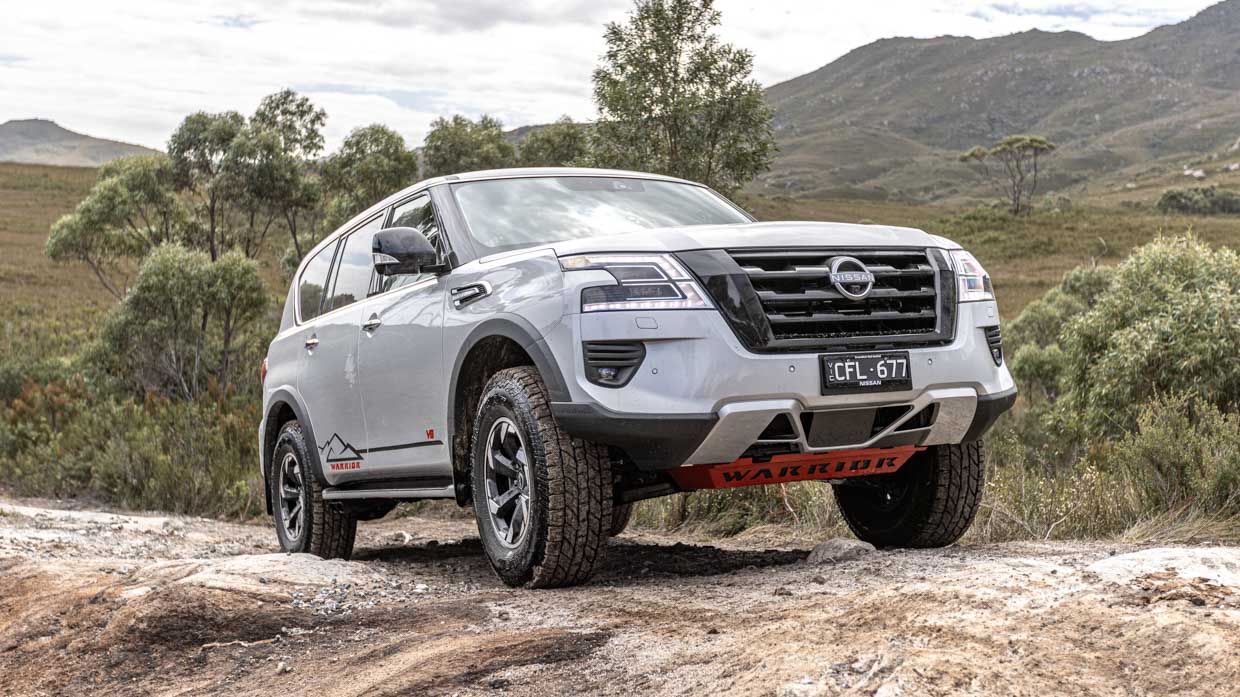
Indeed, both concerns explain that Warrior makeover has improved areas of on-road drivability, though almost as if it was a convenient byproduct or even a happy accident.
A lot of this explains why Nissan chose to base Warrior off the entry Ti rather than the higher-grade Ti-L. Sure, it does mean that, with its new 50mm lift, the cleaner Ti roof capped total height at under two metres to help the Warrior negotiate car parks (again, a byproduct).
But the underpinning theme is that Warrior was specified in strong sympathy of keeping the price down: at $101,160 list, it’s a magnitude more affordable and attainable than its key rival (diesel-powered) Toyota Land Cruiser 300 GR Sport, that wants for $142,101 list.
Further, and quite unlike the Toyota alternative, the Patrol Warrior subscribes to a theory that many a harder-core off-road fan who ordinarily dip deep into the aftermarket to source serious 4×4 capabilities often don’t do so using fancy/techy/cushy variants as donor vehicles.
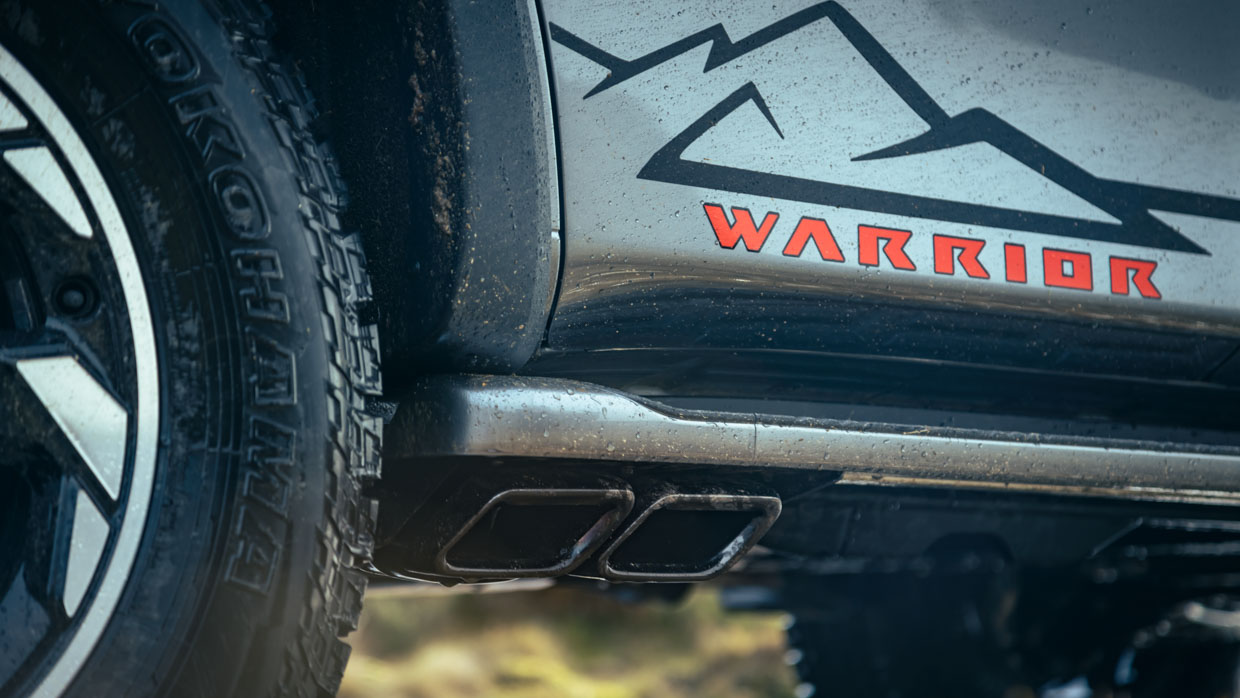
Yes, supercharging and wilder enhancements were considered, if knocked on the head essentially due to the crucial metric of keeping Patrol Warrior relatively affordable as a turnkey, factory-backed, off-the-showroom floor proposition.
That it lobs at low-end GX/GXL LC300 money is of no coincidence.
As a result, the Patrol Warrior finds itself in rarified clean air. There’s really not much else out there with eight seats and a stonking naturally aspirated V8 power wrapped in big all-terrain promise at any price, let alone around the $110K mark on road.
As the Warrior ($101,160) is based off the entry-grade Patrol Ti ($84,900), both variants include baseline standard equipment that includes:
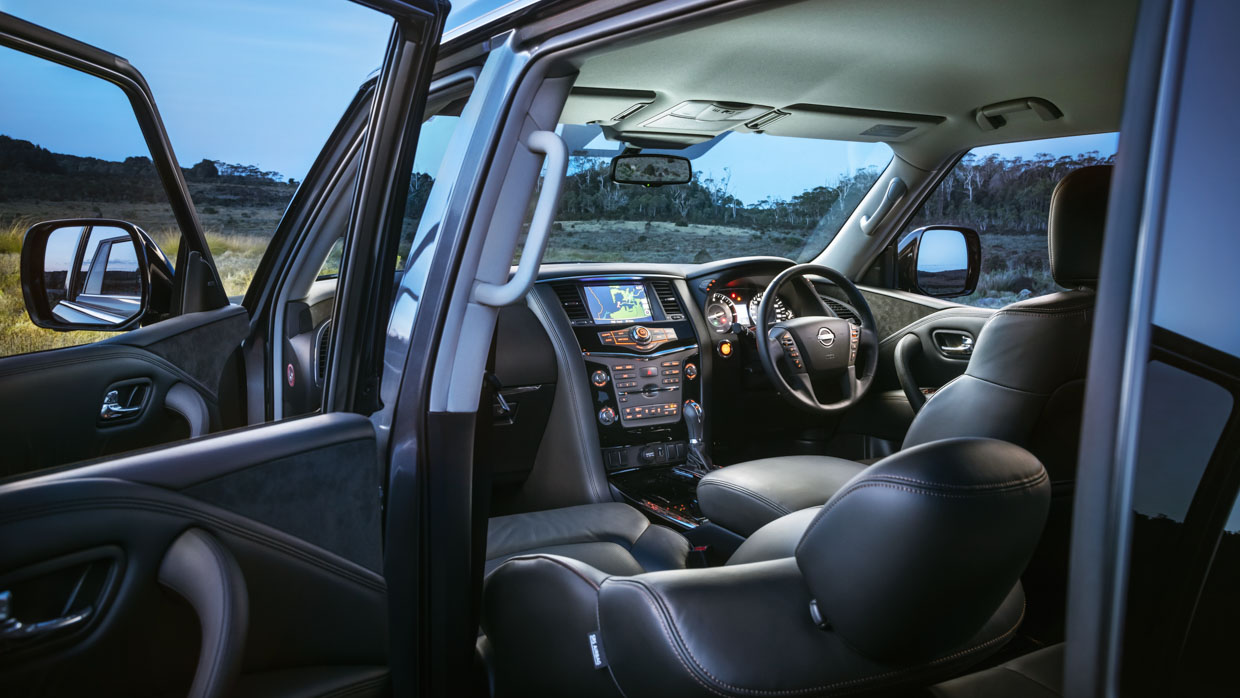
For the extra $16,260 investment, the Warrior adds:
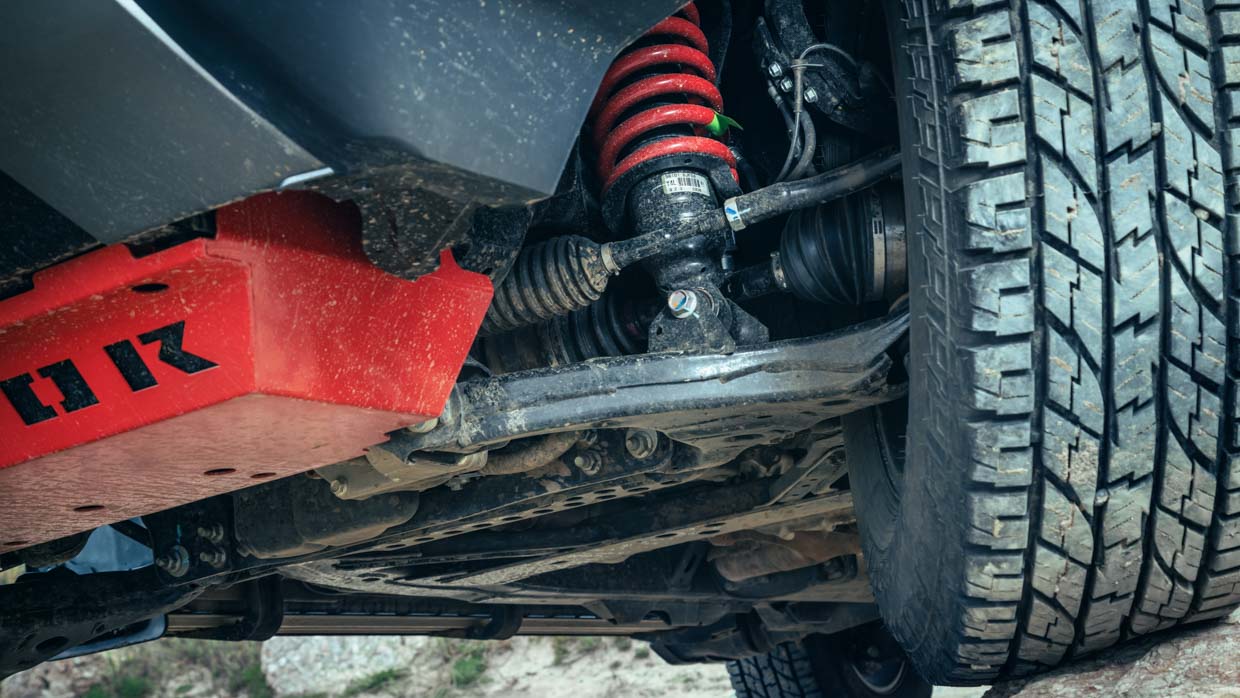
Dimensionally, the Warrior is longer (+94mm), wider (+82mm), sits higher and taller (+50mm each) and has a wider track (+40mm) than the Ti on which it is based.
The Patrol does not fit any Apple CarPlay or Android Auto smartphone mirroring or inductive phone charging. You need to move to the luxury-focused Ti-L to get a seven-seat format, a cooled console box, a powered tailgate, a sunroof along with cooled and heated front seating.
Climies Track, between cliffs tops and ocean near Strayan on the Apple Isle’s east coast, is a 4×4 track that the Tasmania’s Parks and Wildlife Service calls “Very Difficult” and “suitable for experienced 4×4 drivers only”.
So it was somewhat brave of Nissan to choose this venue to demonstrate the off-roading chops of not just one but around a dozen examples of the Warrior its Australian launch, particularly given that few Aussie scribes are seasoned rock-crawlers.
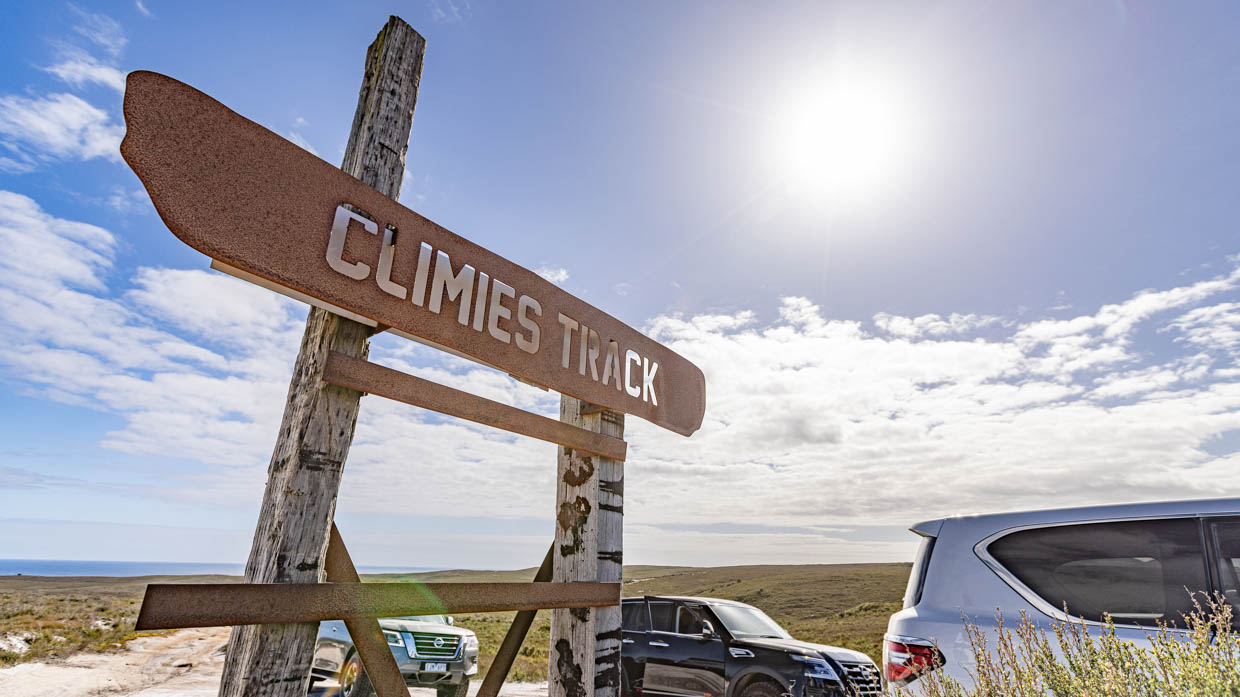
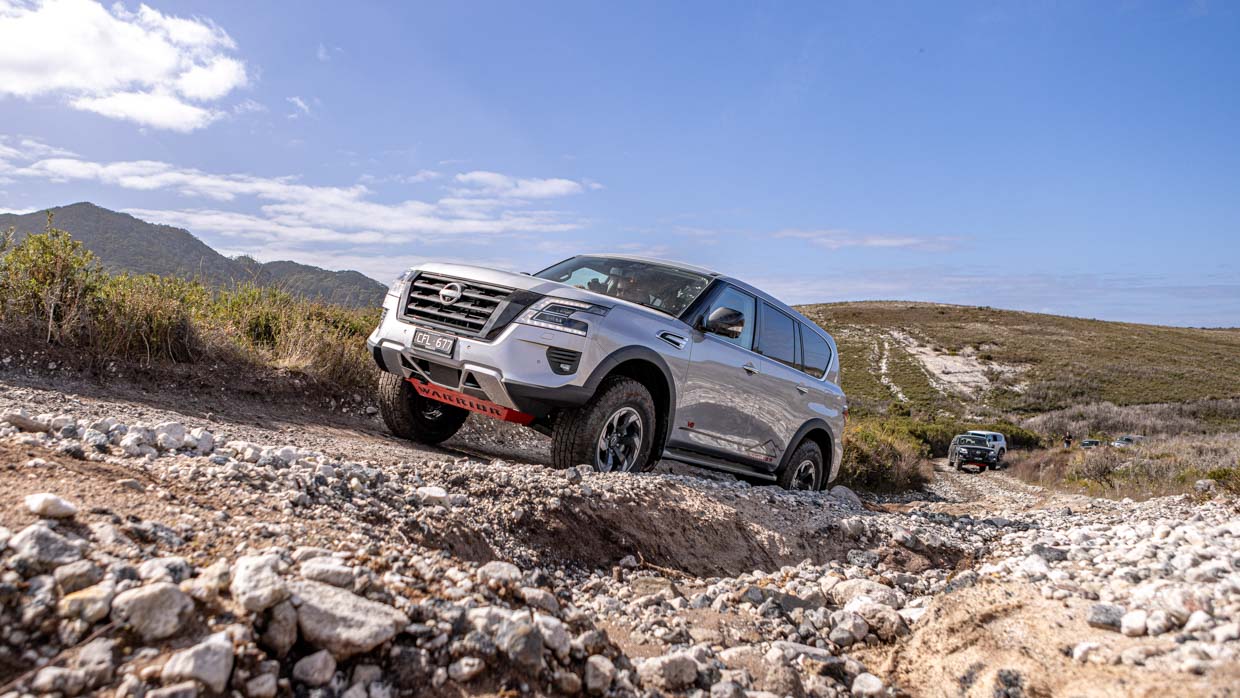
From the get-go, the entire track is tackled in 4×4 low-range, with the Patrol’s helical differential locking torque between the two rear 34.3-inch Yokohama Geolanders.
And what’s immediately apparent is that this course is far more challenging than it looks once you file a convoy of 2.8-tonne wagons into its rocky dips and ruts.
Two key Warrior upgrades – its extra 50mm of ground clearance, the traction of the chunky foot-wide tyres – pay handsome dividends as the going gets quickly and properly rough.
Even across the most severe dips, the handy 40-degree approach angle keeps the Patrol’s nose from impacting mother earth, though the bright red front bash guard starts to earn its keep early.
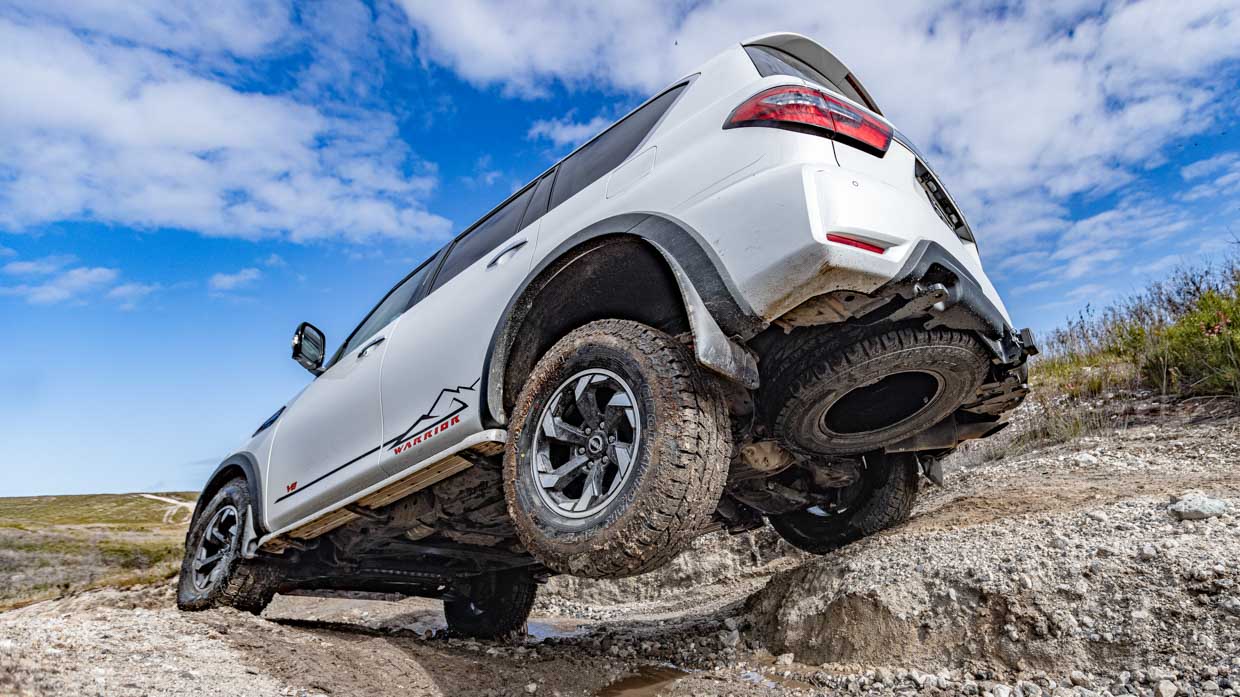
Most impressive is the breakover clearance of both the side steps and the high-slung side-exit exhaust system tucked tightly into the underbody. And not once did the standard fit towbar assembly (sans tongue) or the underbody-slung full-size alloy spare wheel snag the landscape.
For its big, naturally aspirated petrol format, the 5.6-litre V8 is an excellent companion for low-speed obstacle negotiation. In low-range, the throttle remains precise and progressive, and its crisp nature is matched with ample torque to drag the Patrol out of most situations.
It’s only on occasion, along sharp inclines, when the V8 overcomes the grip of the Yokohamas that, at times, aren’t quite as planted to ground as firmly as they could be.
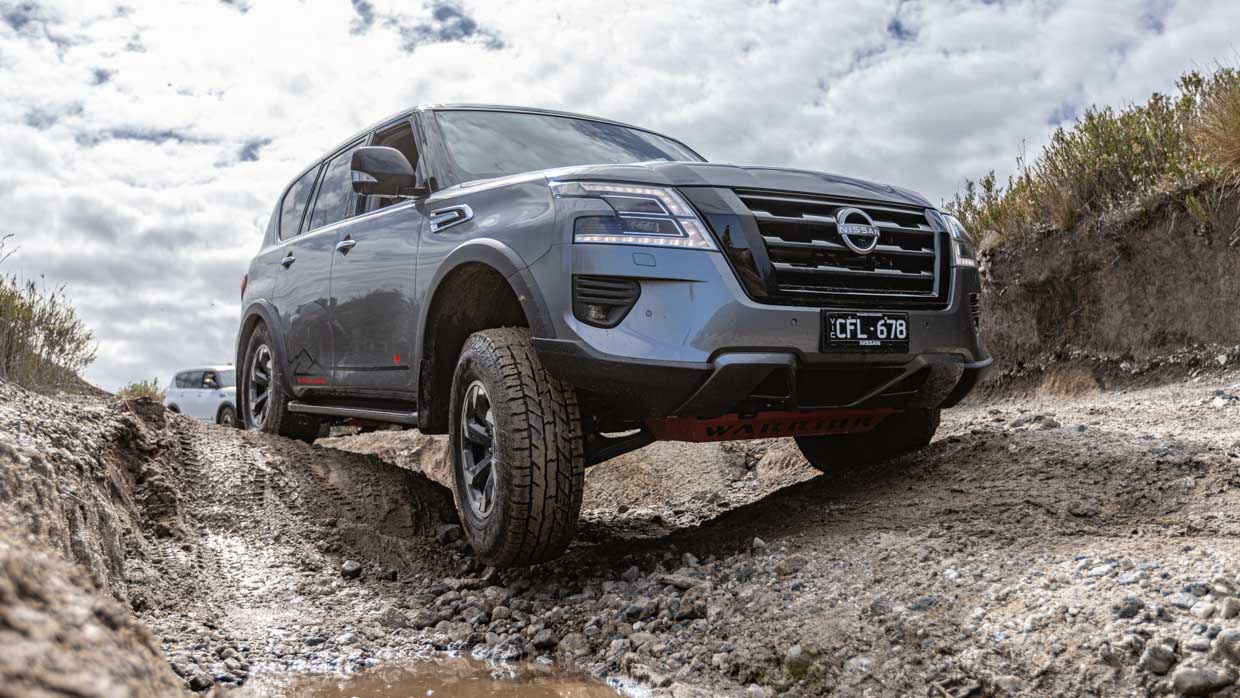
The Patrol Warrior’s wheel articulation isn’t outrageous by hard-core off-roading measures, a design that does tend to cock wheels into the air and, on occasion compromise outright traction.
That said, at the hands of many a rank amateur, the Patrol Warrior – a small squadron of them – proved unstoppable across the Climie Track challenges.
On that, the steering often criticised as aloof and overly assisted on road really shines in the thick of the 4×4 action – you’re never fighting the front wheels, even in the most severe moguls.
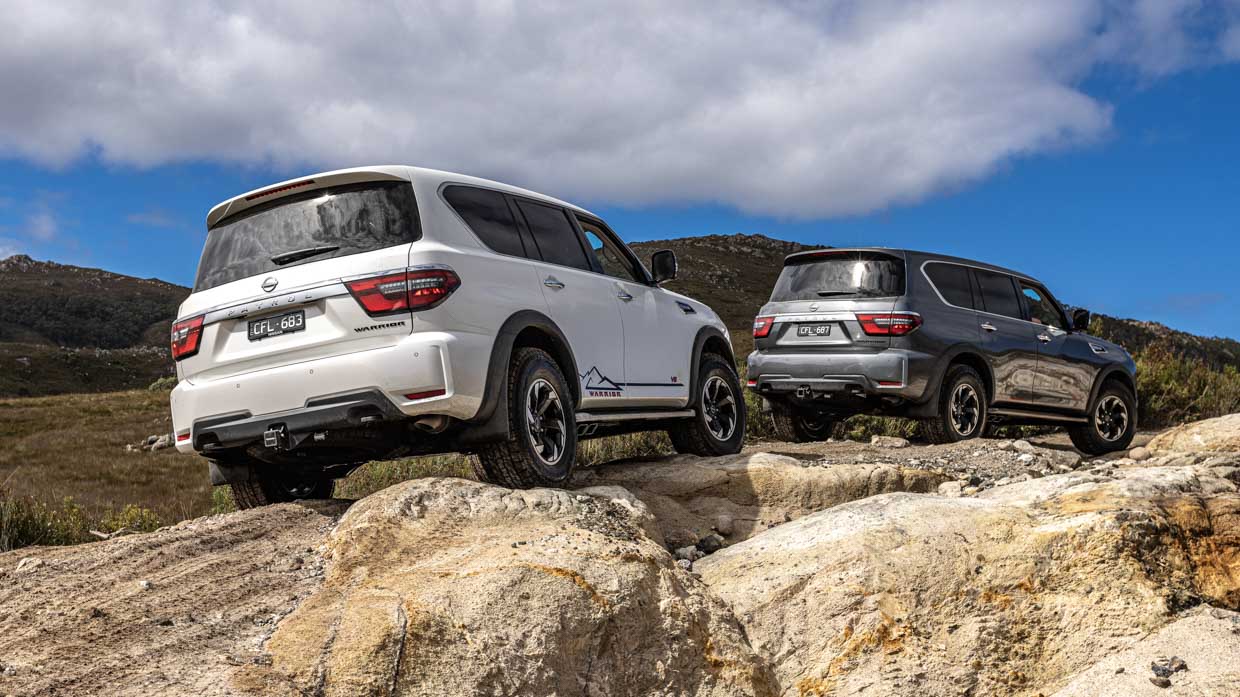
Premcar’s matching of its unique Hydraulic Body Control tuning with new progressive rate rear springs also seems to bring as much benefit in off-road ride comfort as it does in wheel control.
Whatever the on-road outcome, there’s real comfort in the cushioning the underpinnings provide as the Patrol heaves and bobs off road.
It’s an easy drive. Despite the various selectable terrain settings, the Warrior Patrol is a real set-and-forget proposition in low-range. With a steady pace you simply point and steer it across the rough stuff.
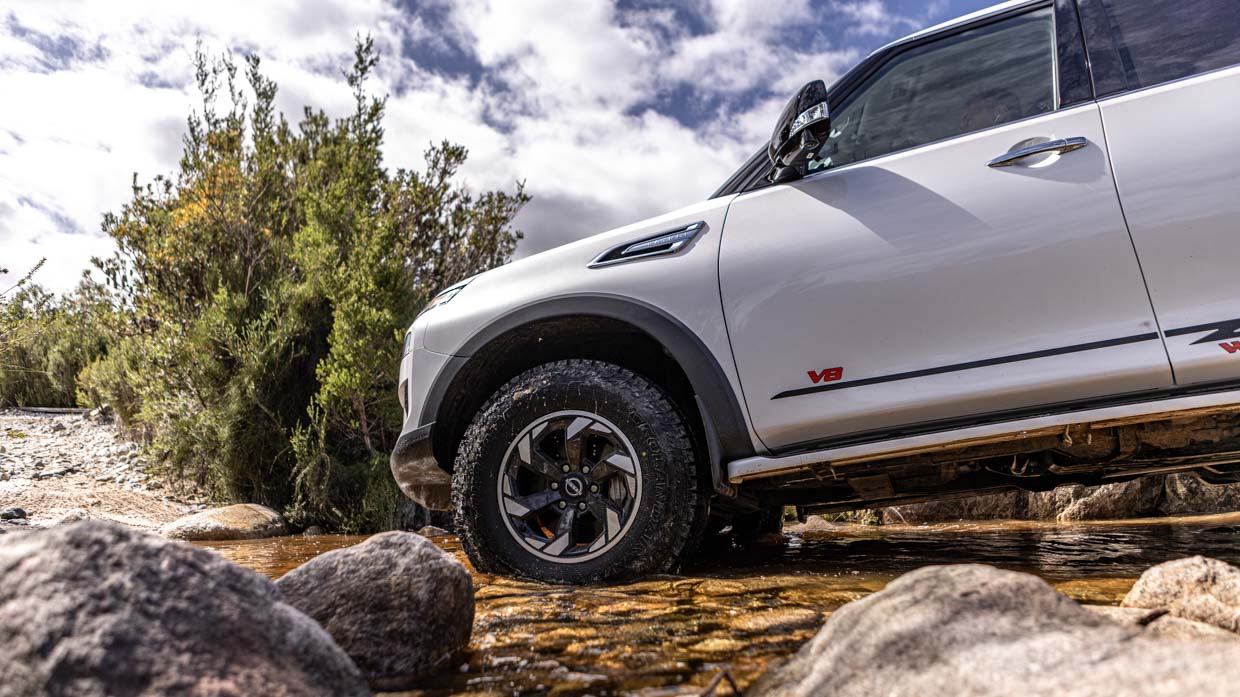
While they do feel unstoppable, our test rigs didn’t necessarily make it through the Climie Track course unscathed. The Patrol Warrior has a 40mm wider track, but overall body width over the regular TI measures an extra 82mm. It’s over two metres wide, not including the mirrors…
It would transpire that some of the Tassie track’s narrower passages would prove impassable without the driver choosing between glancing rocks to one side or grazing against shrubs on the other.
None of our fleet escaped without heavily scratched body paintwork. Our tip: the Moonshine White paint ‘hides’ the scratches the most effectively…
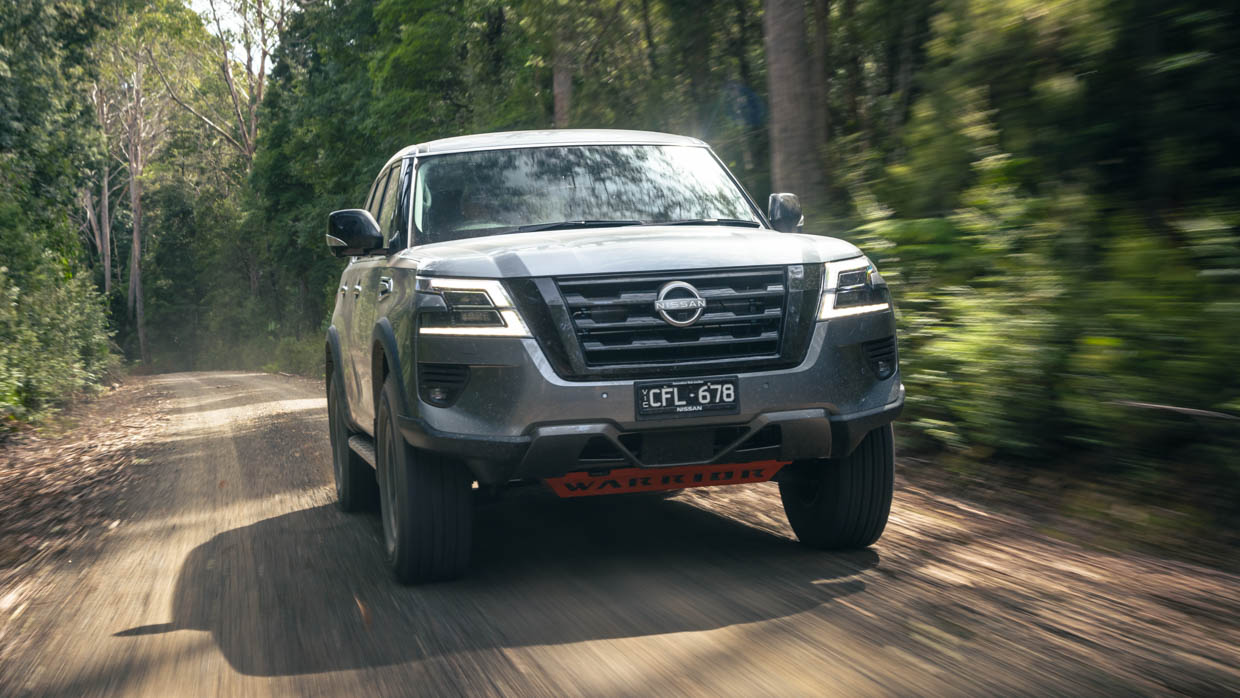
Slightly less dangerous – we did have to dodge a horse – is the Tasmania hotmix, a surface where Y62 Patrol has infamy for its wallowy and generally disconnected nature. And there’s certainly some improvement with the Warrior’s nature in some areas.
Traditionally, the inertia of 2.8 tonnes is easy to lose and tough to catch at the helm on twisty roads in inclement or overly cold conditions, but during our sunny spring assessment the Warrior can be pedaled with a fair degree of confidence almost despite the knobbly rubber.
There’s a fair amount of mechanical grip in those broad Yokohamas.
What’s lacking, though, is driver connection. The softer front and “roughly 50-percent firmer” progressive rate rear springs in tandem with Premcar’s retooled and retuned Hydraulic Body Motion Control passive dynamic system does mitigate that standard model’s floaty wallow to some extent and it’s generally tauter by degrees.
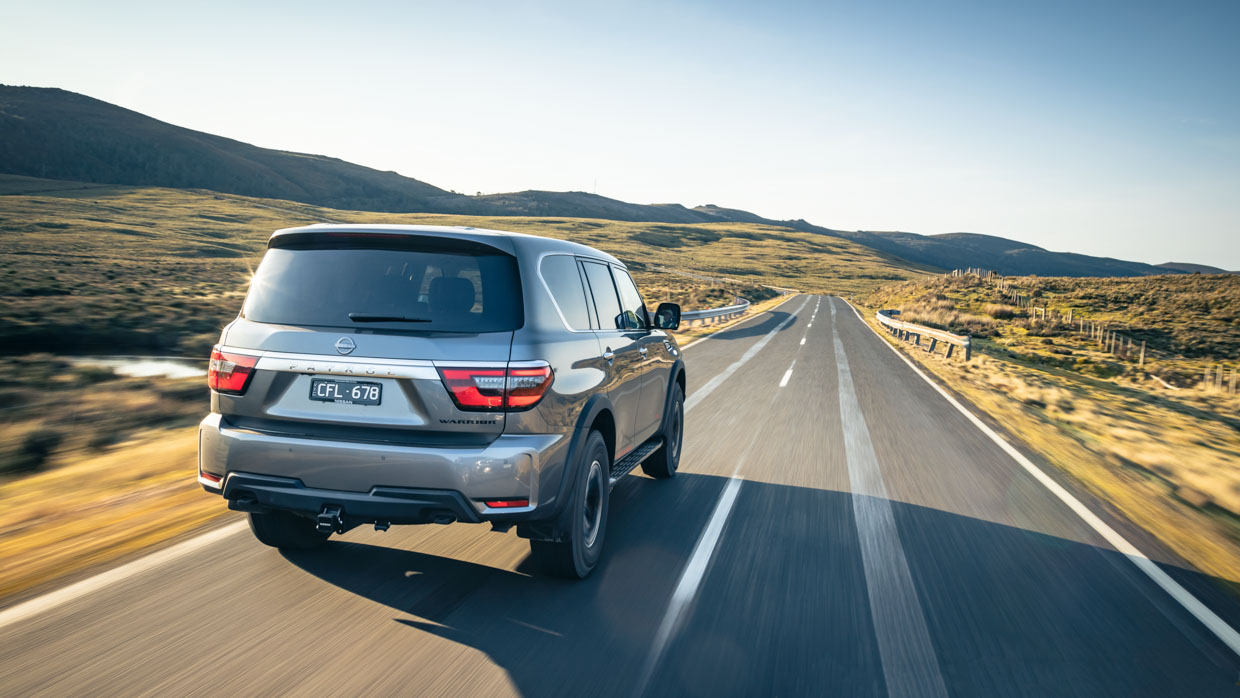
But you still punt this Patrol mostly with your eyes and not with your hips or other senses.
It’s a very big rig demanding a circumspect approach, one that mightn’t instill much trust in dynamics when the going gets slippery, particularly with its soft brake pedal and downright aloof steering. The jury is out, too, on active safety intervention once the chassis gets loose.
Still, it’s comfy and cooperative (enough) to make for leisurely long-hauling, and the bi-model exhaust is tuned nicely in terms of balancing sonic richness once the side-pipes open – above around 3500rpm or under heavy throttle – and bringing quietness when you’re less enthusiastic with the loud pedal.

That said, the fizz of the ride and patter of the tyre tread are almost ever-present everywhere.
It’s slightly less refined than the regular Patrol though, in complete fairness, the compliance and NVH suppression is quite impressive for a device you can point straight into the mulga on a whim if you felt like it.
And thus, it strikes a pretty decent middle ground of being purposeful and polite enough to lap anywhere in Australia at the drop of a hat.
For it’s crucial part in the on-road experience, the VQ56 engine is a real charmer in character and certainly musters up nice, linear thrust when called to march.
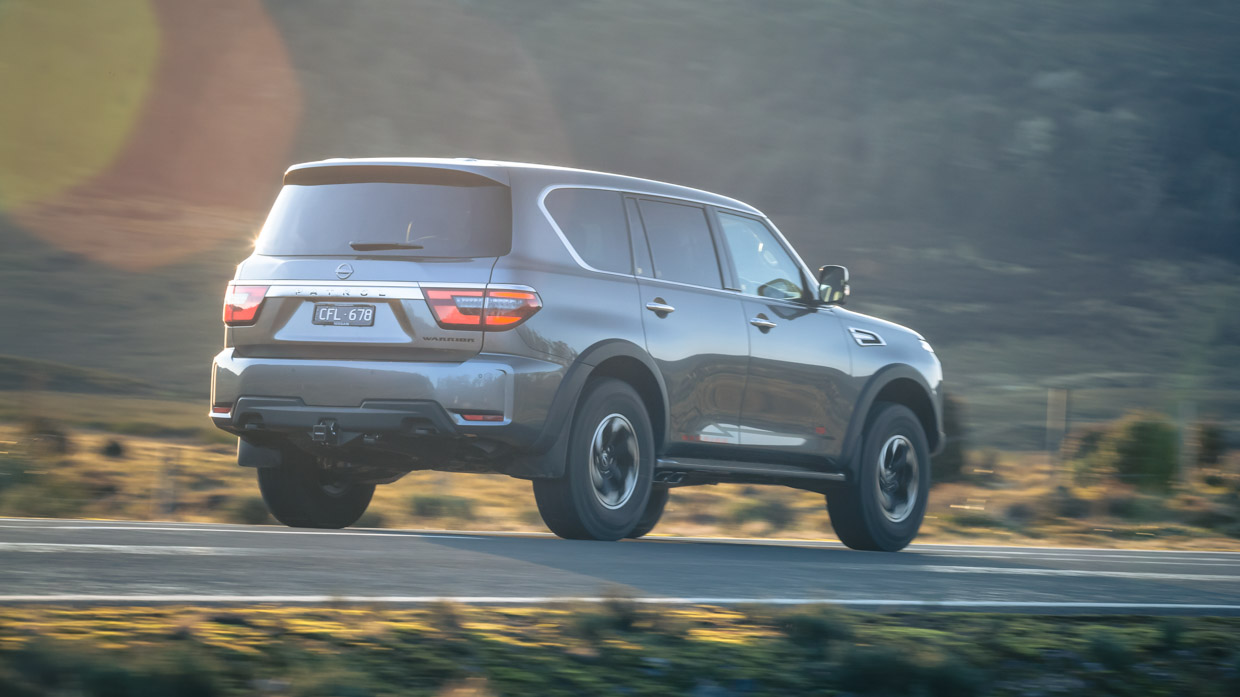
However, the seven-speed auto isn’t the smartest or keenest transmission on the block, at times shuffling up and down ratios excessively climbing hills and returning the odd thump and clunk when selecting drive from park.
Thirsty? You bet. At its most leisurely, it sometimes drops as low as the high-12s. Out in the rough stuff in 4×4 low-range, we saw 28L/100kms…
But if there’s a real downmark to the driving experience, it’s actually the seats. Despite some lumber adjustment, your reviewer finds the Patrol Ti’s stiff and almost contourless front pews uncomfortable and wholly unsupportive, making driving a quickly fatiguing experience.
Reminders of the Y62’s vintage come flooding through the moment you climb into the Patrol cabin. It feels at least a decade and a couple of design languages old, if somewhat fitting and strangely welcoming at the same time.
At the risk of launching into negatives, possibly the biggest disappointment is how little effort has been injected into separating Warrior from its Ti donor car. You get ‘Warrior’ logo Alcantara dash and door inserts, a bit of extra piano black on the centre console…and that’s about it.
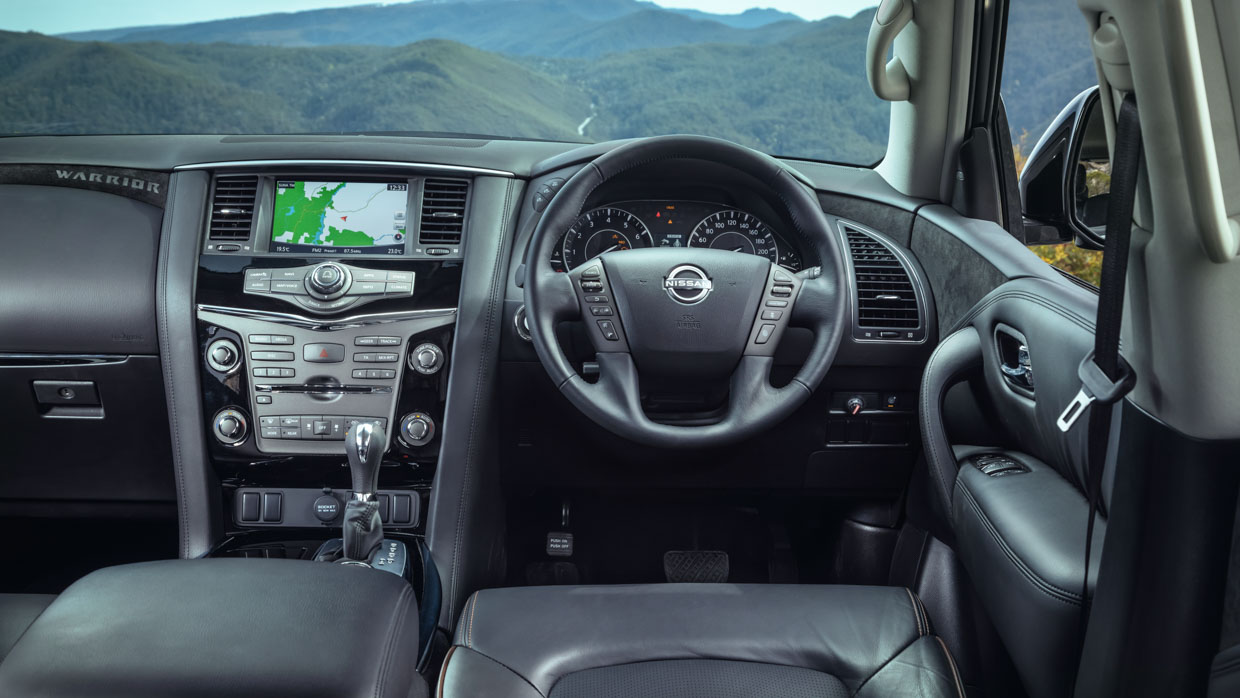
Classic interior time warp extend forward from the awful seats to the retro wheel that tilts from a low pivot point to create a slant angle that was once in vogue many moons ago, framing an analogue instrument cluster with no digital speedo and, instead, a dinky little 4.2-inch LCD screen sourced from the dark ages.
Ergonomically, there’s a strong sense of sitting on – rather than in – the cabin, that both brings both a sense of commanding seating if robbed engagement and slightly compromised control. Horses for courses, then…
Some strong drawcards, though, are the sheer spaciousness, its genuine sense of solidity in the build quality – the Patrol feels downright bombproof – and the fact that the ye-olde sea-of-button effect makes pretty much most of the cabin’s somewhat oversized controls easy to navigate quickly.
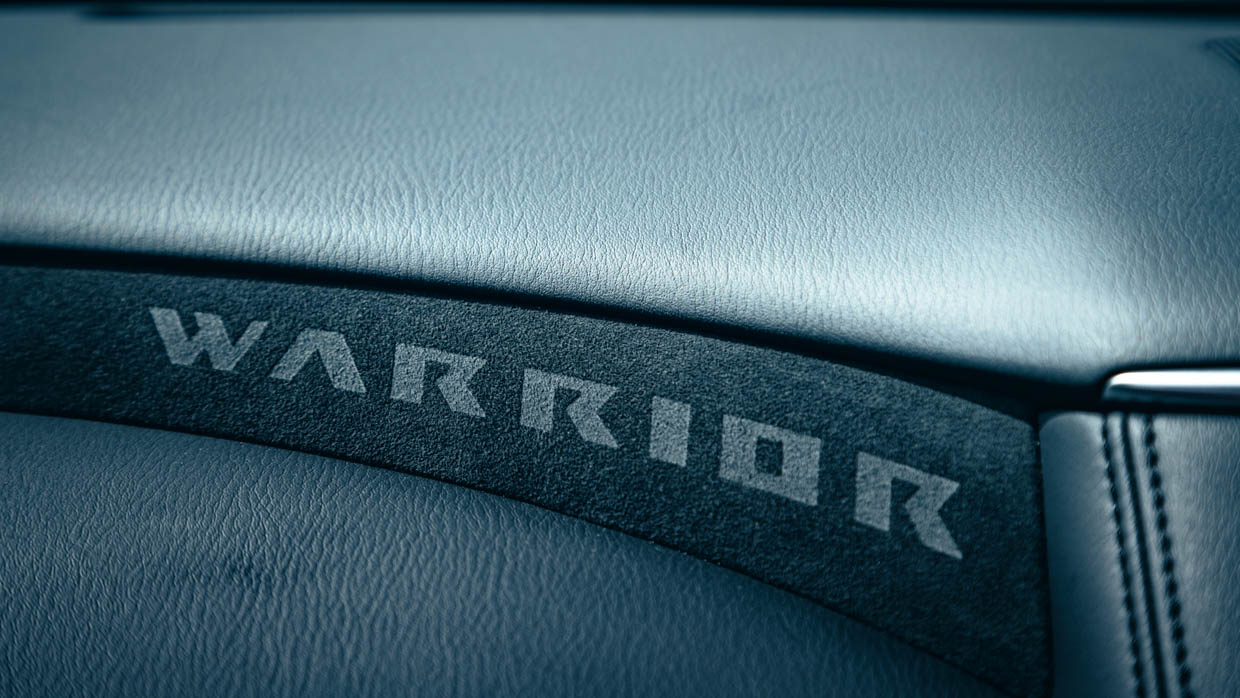
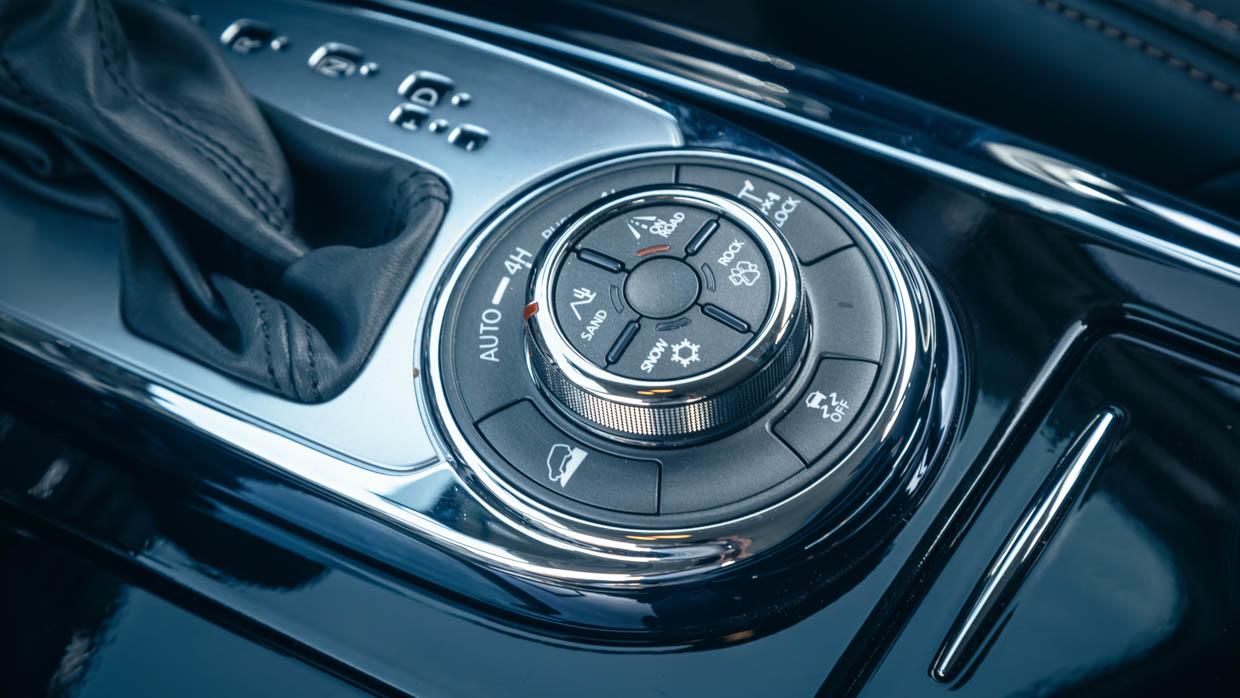
Further, the rotary terrain and drive select array is grouped together on the centre console, where it’s easy to read and access.
The first row controls for what’s a three-zone climate control, too, are a breeze (sorry!) to use, while ventilation via the floor and ceiling vents extend right through all three rows, with dedicated row-two zone controls in the rear of the centre console.
Increasingly criticised in reviews with the march of time is the 8.0-inch touchscreen media system that’s downright poky in the Patrol vast dash fascia. It looks, feels and acts outdated, has no Apple CarPlay or Android Auto due to its archaic DNA – though will stream Bluetooth audio – and it lacks digital radio.
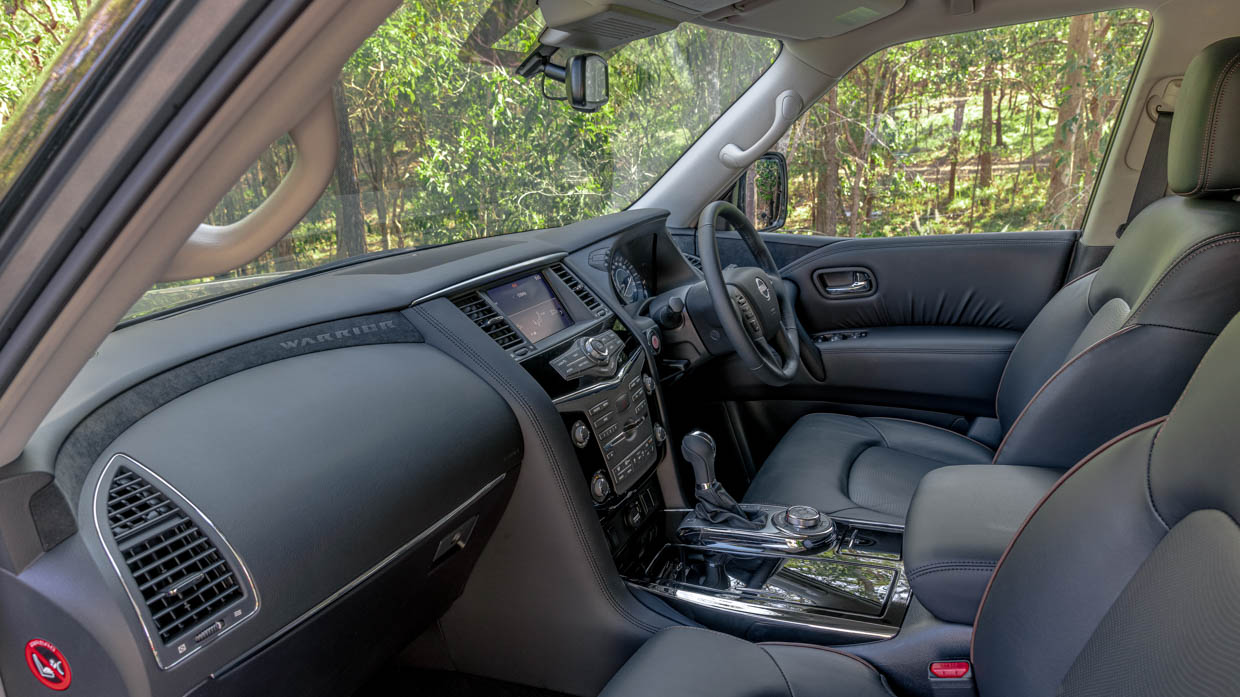
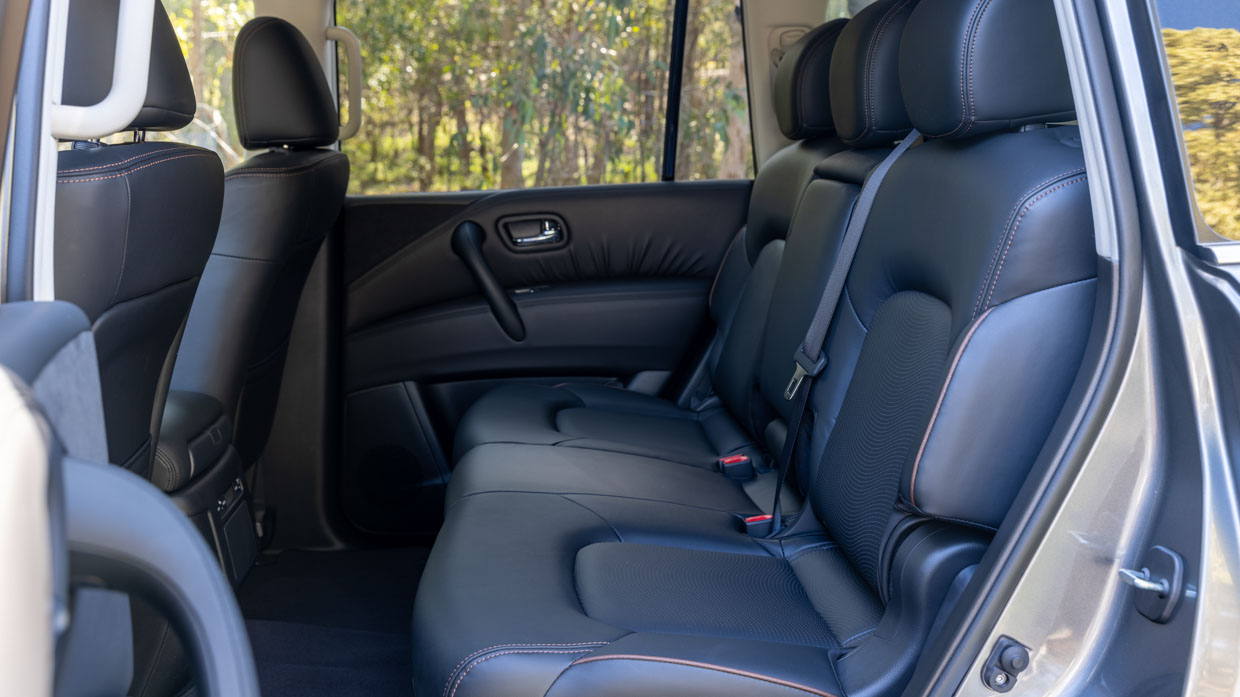
Even the 360-degree camera system and proprietary sat-nav – essential for a big country with patchy mobile coverage – are pretty rudimentary. But you do get a CD/DVD player…
Row two offers a generous amount of room and the sheer cabin width allows decent breathing space for passengers lined three abreast. The small mound of a tailshaft tunnel and ample legroom also present a space that’s easy to ‘lounge’ in for long trips.
In fact, travelling in the second row proves to be noticeably comfier than further up the cabin, mostly because the rear bench – with tilt-able seatback – is nicer place to spend time on than the buckets mounted up front.
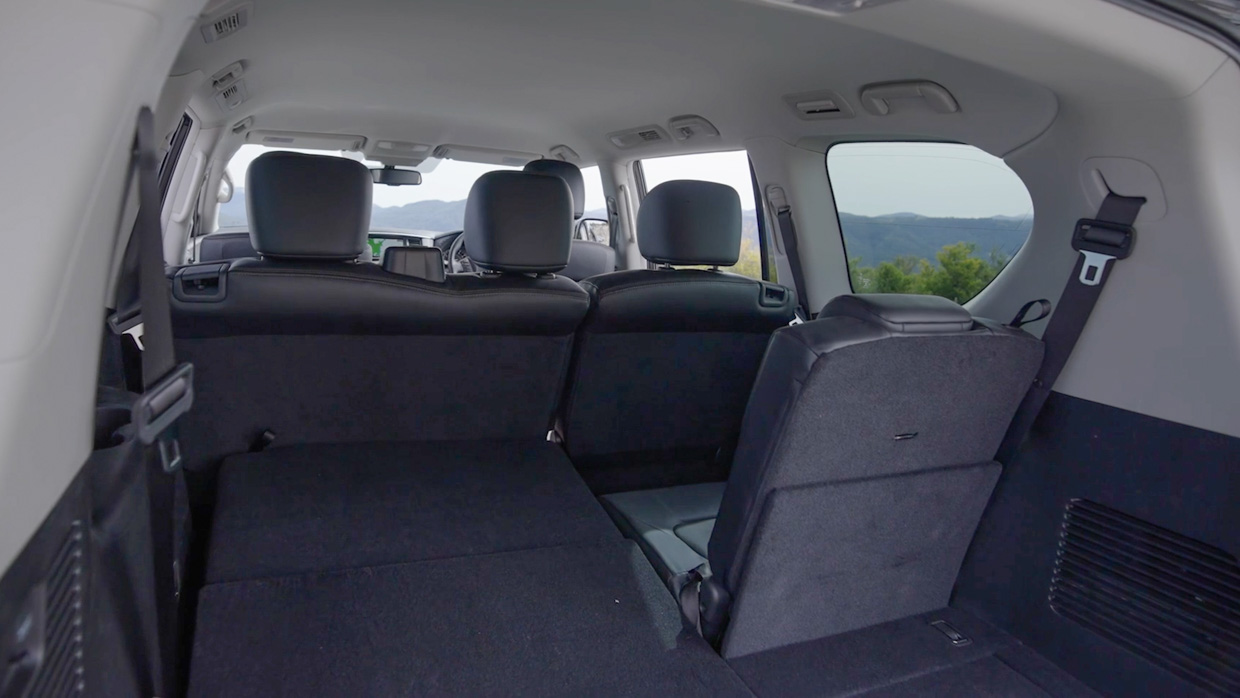
With the flip-forward second row, access to row three is remarkably easy, though knee room is scant once you’ve nestled into the split-fold third-row bench.
Cup holders and aforementioned ceiling vents are conveniences for an area of the cabin best served for smaller kids if you’re keen to fill all eight seating positions.
Boot wise, you get a decent 468 litres even with all three rows of seats in play, expanding to a whopping 1413L as a five seater. Again, the ingenious towing package allows the full-sized spare to hang under the body, allowing for a conventional tailgate, albeit one with a manual action.
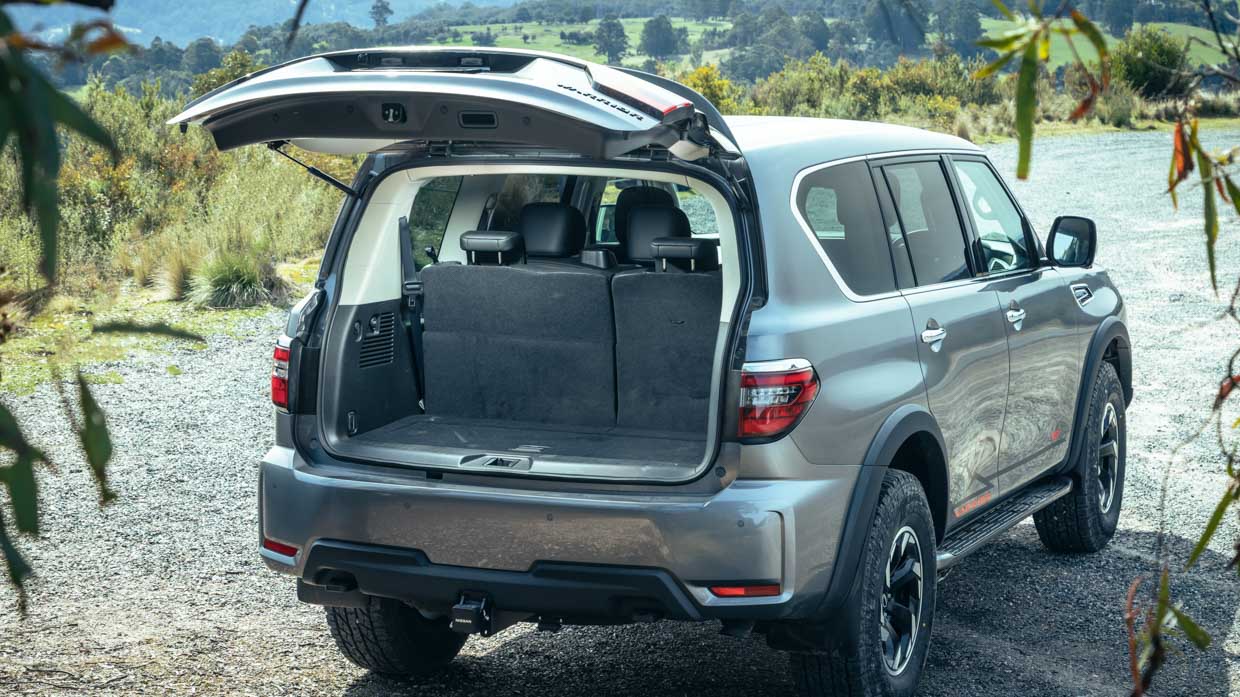
The Y62 Patrol has not been tested by ANCAP and, given its advanced age, you can bet it never will in this generation.
Features wise, the Patrol Warrior fits:
The Patrol Warrior is not cheap to run. Minimum fuel grade for the big V8 95 octane, which is well north of two dollars per litre at the time of review. The best we saw during open road touring in Tassie was around the 13-litre mark per hundred.
The good news is that, with its huge 140-litre tank, the touring range is a theoretical 1000kms. The bad news is that a tankful will cost around $300.
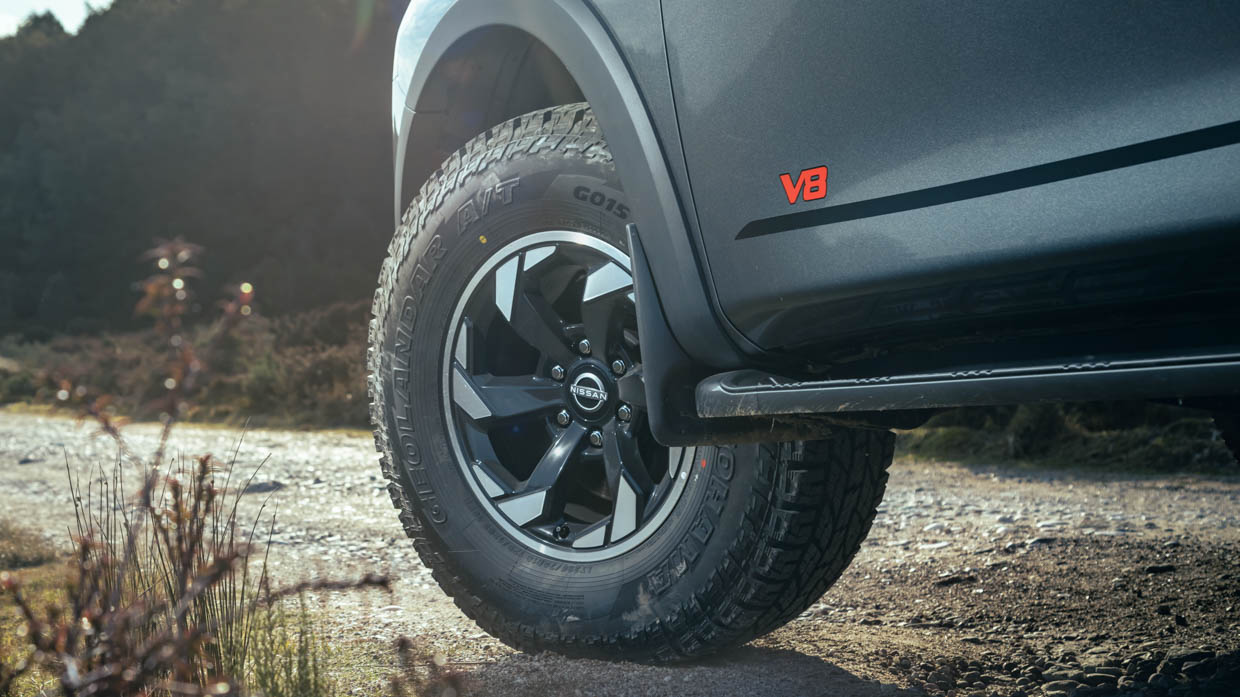
That’s a best-case scenario. Load it up towards its 3620kg GVM or hitch up a hefty trailer and consumption will rise. As mentioned earlier, during our stint of low-range off-roading, our test rig’s thirst shot up to a crazy 28L/100kms.
Servicing? Well, the Patrol breed requires servicing every 12 months, which is much more preferable to rival Toyota Land Cruiser 300’s six-month intervals.
However, the Nissan’s intervals are capped at 10,000km, which doesn’t make for much grand touring between stints off the road.
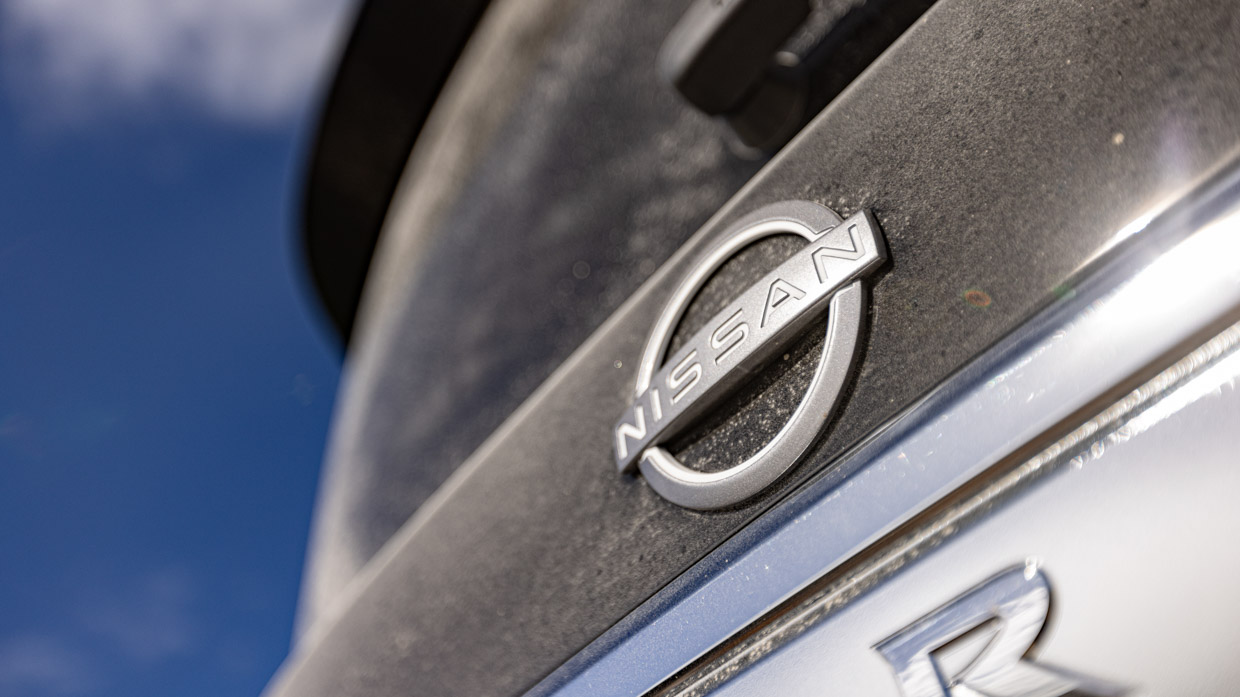
The Warrior Patrol costs $3017 to service for five years and 50,000kms. For the curious, rival Land Cruiser GR Sport costs $4000 for five years and 100,000kms.
Warranty is a typical five years of unlimited-kilometre coverage.
When we drove the Patrol Warrior prototype a few months back, we surmised that we’d need a fuller on- and off-road experience in the production version, and a definitive price, to come to a conclusion about the vehicle. And here we are…
The verdict is that the Patrol Warrior is a bit of a mixed bag, a specific some somewhat unique tool for specific buyers and particularly those with older-school tastes, if a vehicle that comes up short in many areas viewed through a wider motoring lens.
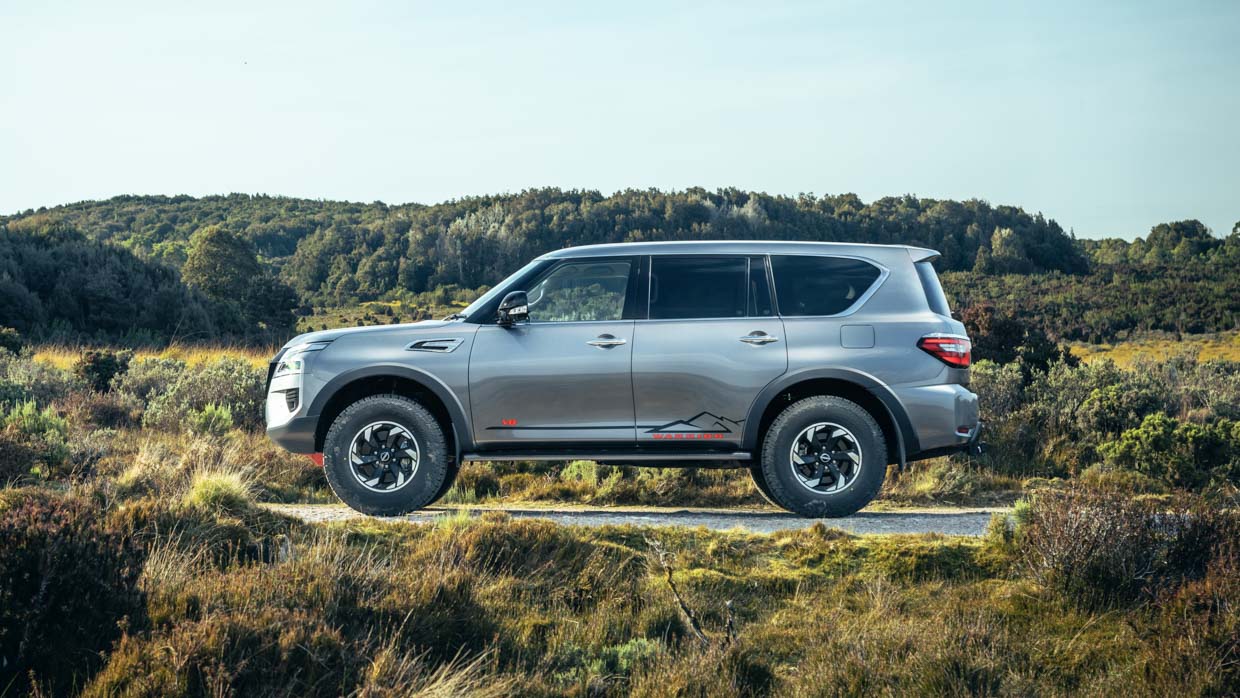
For those specifically cross-shopping Warrior against an obvious rival, you don’t need the Land Cruiser 300 GR Sport present in comparison to see how the big Nissan lands.
On one hand, the Warrior is vastly more affordable, the wait times (at the time of review) are much shorter and the big 5.6 petrol V8 tugs the heartstrings in its own inimitable way. And the Warrior’s humbler nature and less flamboyant aesthetic brings its own appeal to taste.
However, the sheer thirst of the V8 and the expense it brings, both environmentally and at the hip pocket, is daunting, and the Toyota’s particular chosen lane – diesel power, a vastly more contemporary interior and newer tech – are big lures to off-road-lovers with an agnostic approach to brands.
We certainly love to get these two rivals together for a twin test…
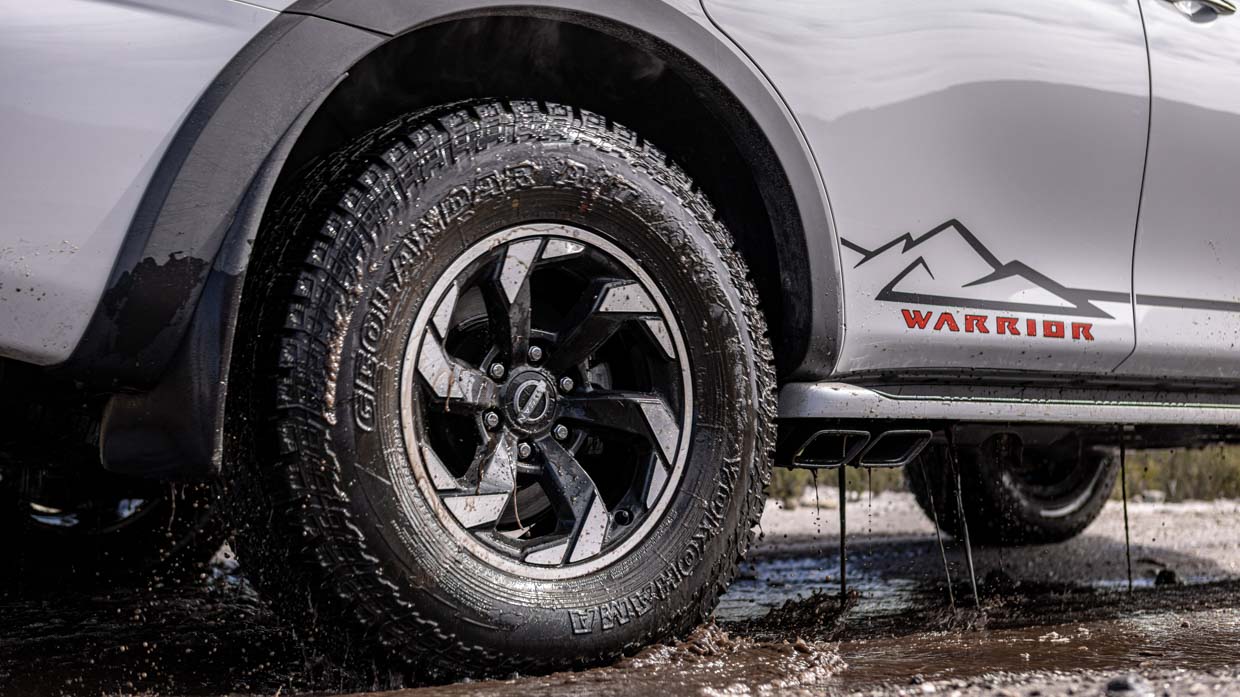
In isolation, the Patrol Warrior does deliver what it promises on the box: an impressively capable turnkey all-terrain wagon.
That’s it built off the base Ti is a shrewd if effective move to cap its price, and what the Warrior package does fit does pay handsome dividends when the going does get properly rough. It mightn’t be the nicest and flashiest rig in areas, but isn’t that really what the target buyers want?
But while it’s a somewhat effective all-terrain solution, the Patrol Warrior still falls short in areas of the experience, be it directly because of its age or because general expectations in motoring do inevitably evolve.
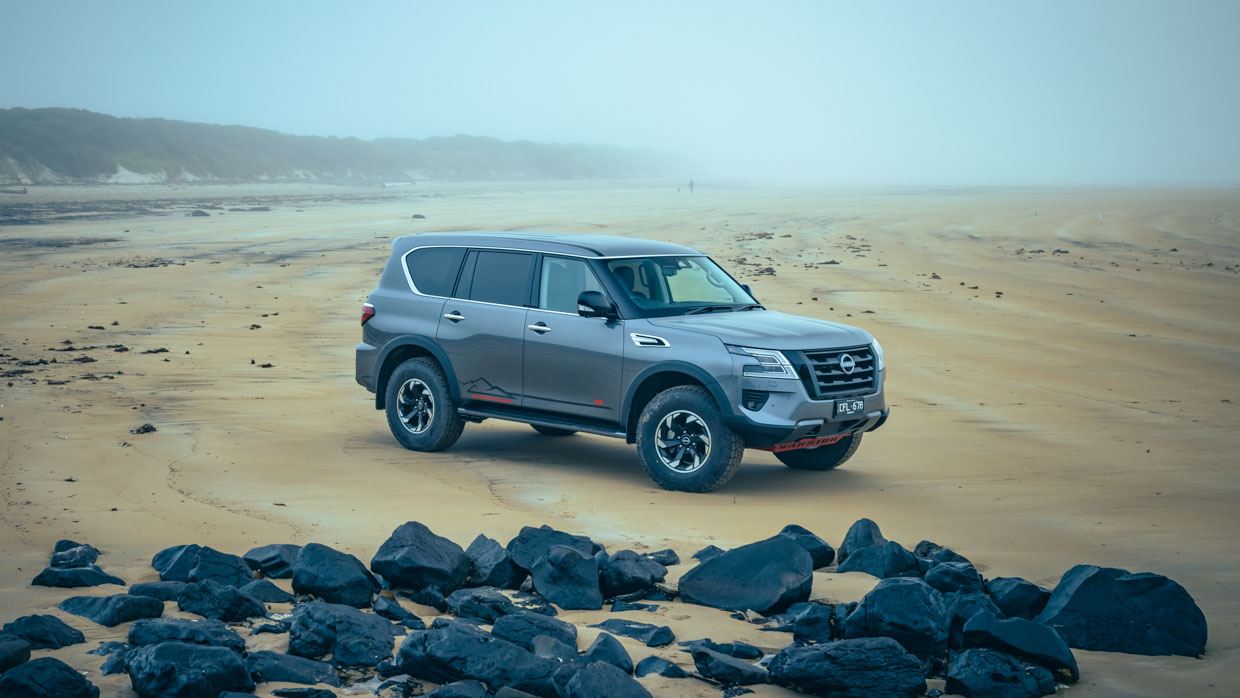
The thirst, the clunky transmission, the fizzy ride, some of the clumsy interior execution all weigh against the Y62 format, regardless of charm and terrain-crossing capabilities.
Don’t get me wrong: Nissan and Premcar have done a fine job within the constraints of the Patrol donor’s age and its price positioning in Warrior guise.
But from the crook seating to the lack of smartphone mirroring to the absence of a front LSD – as fitted in GWM Ute Cannon XSR around half the Warrior’s price – the monstrous Nissan wagon isn’t as all-round accomplished as it could be.
About Chasing cars
Chasing Cars reviews are 100% independent.
Because we are powered by Budget Direct Insurance, we don’t receive advertising or sales revenue from car manufacturers.
We’re truly independent – giving you Australia’s best car reviews.
The estimate provided does not take into account your personal circumstances but is intended to give a general indication of the cost of insurance, in order to obtain a complete quote, please visit www.budgetdirect.com.au. Estimate includes 15%^ online discount.
^Conditions Apply
Budget Direct Insurance arranged by Auto & General Services Pty Ltd ACN 003 617 909(AGS) AFSL 241 411, for and on behalf of the insurer, Auto & General Insurance Company Limited(ABN 42 111 586 353, AFSL 285 571).Because we don’t know your financial needs, we can’t advise you if this insurance will suit you. You should consider your needs and the Product Disclosure Statement before making a decision to buy insurance. Terms and conditions apply.
Indicative quote based on assumptions including postcode , 40 year old male with no offences, licence suspensions or claims in the last 5 years, a NCD Rating 1 and no younger drivers listed. White car, driven up to 10,000kms a year, unfinanced, with no modifications, factory options and/or non-standard accessories, private use only and garaged at night.
^Online Discounts Terms & Conditions
1. Discounts apply to the premium paid for a new Budget Direct Gold Comprehensive Car Insurance, Third Party Property Only or Third Party Property, Fire & Theft Insurance policy initiated online on or after 29 March 2017. Discounts do not apply to optional Roadside Assistance.
2. Discounts do not apply to any renewal offer of insurance.
3. Discounts only apply to the insurance portion of the premium. Discounts are applied before government charges, taxes, levies and fees, including instalment processing fees (as applicable). The full extent of discounts may therefore be impacted.
4. We reserve the right to change the offer without notice.